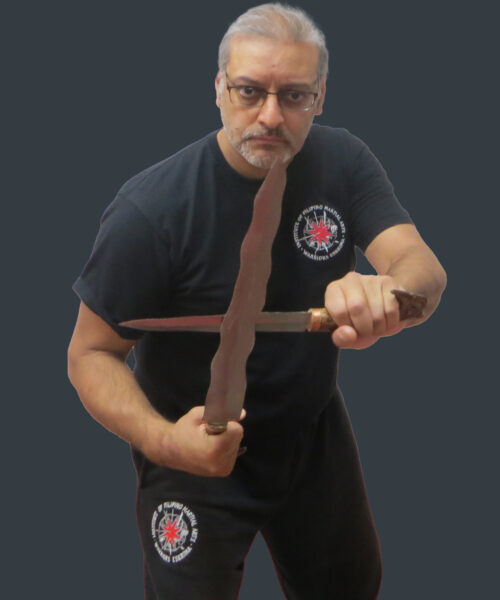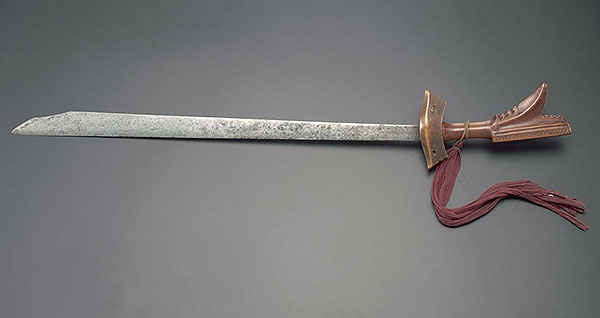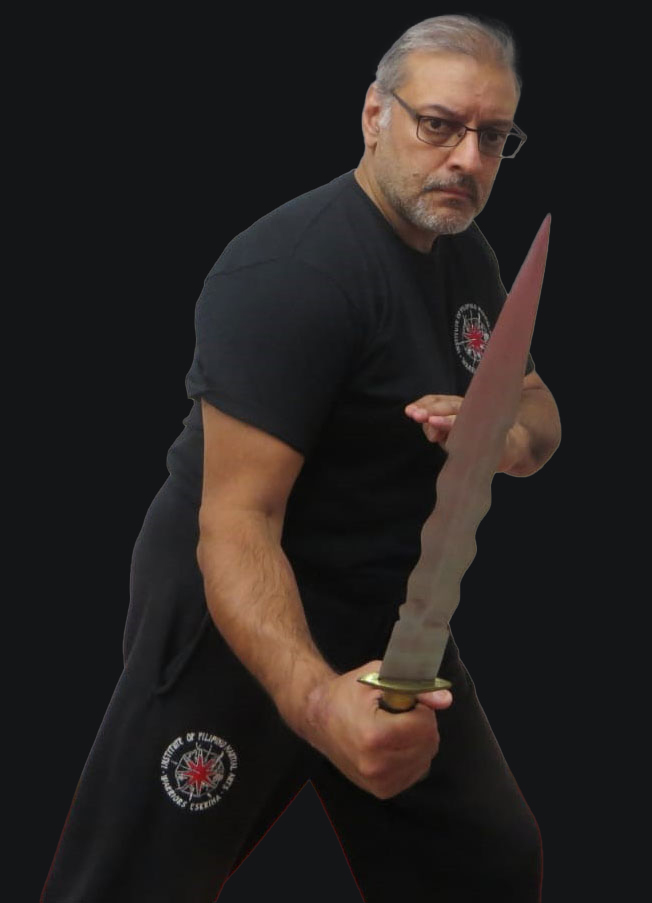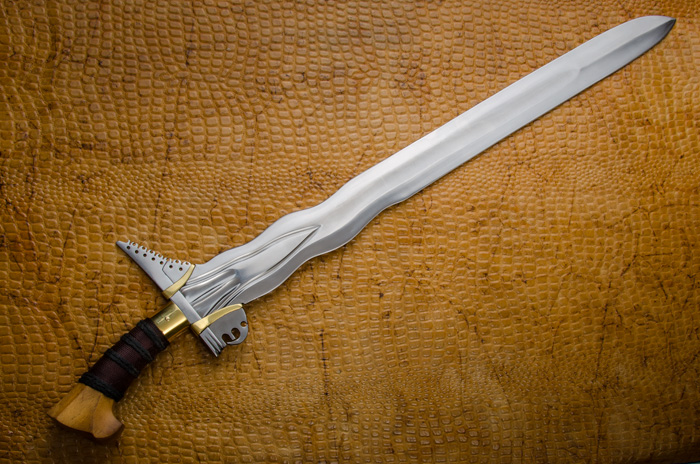Espada y Daga

The Espada y Daga (Sword & Dagger) is a system or a technique that was developed and perfected in the Philippines. The focus of this method of fighting is to be able to go in and out of long, middle and close ranges to trap up the enemy and kill, maim or disable.
Though, it is a fighting method indigenous to the Philippines, one of the inspirations for its evolution is said to be European fencing, mostly Spanish; as you can see by the Spanish name of “Espada y Daga!” One of the few long-lasting cultural and martial influences the Spanish conquistadors left with the Filipinos was the Spanish names to some of the techniques and the names of the fighting systems popularly known as Arnis or Eskrima (sometimes spelt Escrima).
The Filipinos imitated the Spanish version of Espada y Daga and soon found the weaknesses working a way to make the offensive moves complicated so the Spaniards could not counter them.
To be able to coordinate such skills with a sword and knife together consisted of many hours of training drills for the development of the proper reflexes and good flow in using two weapons for parrying, checking, scooping, thrusting and slashing. Included in this training was the incorporation of geometrical footwork, body angling and zoning for evasiveness to be able to close in and attack without being killed.
Various locking and takedowns from Dumog are normally added once a student has demonstrated good fighting skills. Both the Espada and the Daga (sometimes spelled “dagga”) are employed at the same time with a beautiful looking weave like movements which are very deceiving and quick to finish the job!
Kampilan Sword
According to Filipino history, the Kampilan is believed to be the main sword that struck down the famous explorer Ferdinand Magellan by the legendary Chief Lapu-Lapu. Originally dual pointed with a carved hilt, these swords of the Moros of Sulu and Mindanao are carried by warriors who are in the first line of defence and actually are considered a national weapon of the Moros of Sulu & Mindanao.
Among Filipino swords, the most distinguishing characteristic of the kampilan is its huge size. At about 36 to 40 inches (90 to 100 cm) long, it is much larger than other Filipino swords and is thought to be the longest, though smaller versions (sometimes called the “kampilan bolo”) exist. A notable exception would be the panabas, another Philippine longsword, of which unusually large examples used for ceremonial execution purposes could measure up to four feet in length.
The blade is narrow near the hilt and it gradually swells in width into an almost trapezoidal profile at the end. The blades are often laminated with various styles of tip. Kampílan blades often have holes near the tip that are sometimes filled with brass. Rarer still are specimens that have tips exhibiting a kris-like fretwork, while others have engravings down the entire blade. Although the kampílan can be used with one hand, it is primarily a two-handed sword.

Kalis Sword

A traditional double-edged sword to double the pain, and do a dual job that single-edged swords can’t do. Kalis swords are believed to have originated in the 13th century on the island of Java in the Indonesian archipelago and migrated to the Philippines, Malaysia, and various other Southeast Asian countries.
The Kalis sword is very distinct in appearance with various shapes and sizes. This particular blade is mostly straight from the tip down and wavy near the handle. Typically, Filipino Kalis swords are larger and heavier than their Indonesian equivalent. When used in combat the Kalis sword is primarily a slashing weapon but has dynamic thrusting power.
The Kalis sword is an important part of Filipino culture, history, and steeped in tradition.
To be able to coordinate such skills with a sword and knife together consisted of many hours of training drills for the development of the proper reflexes and good flow in using two weapons for parrying, checking, scooping, thrusting and slashing. Included in this training was the incorporation of geometrical footwork, body angling for evasiveness to be able to close in and attack without being killed.
The kalis blade is defined as one that is wide on the base and double-edged. It is capable of delivering both chopping and slicing cuts. While many assume the traditional form of the kalis is the fully wavy blade, the half-waved half-straight, as well as the fully straight blades, are equally if not more common, as straight blades were more practical in combat. Moro kalis blades generally range in size from 18 to 26 inches (46 to 66 cm), though as with all Moro weapons there are exceptions. Generally, however, the larger blades are found on later pieces, while the oldest Moro kalis tend to be of smaller stature. Damascene patterning is sometimes evident though often not as controlled as seen in the complex pattern welding of the smaller Malay keris.

Espada – Sword
It is important to understand the characteristics of the weapon principle as the characteristics of the sword are very different from the stick; therefore certain movements of the stick are not as effective when applied with the sword and vice versa. At this stage of training the following areas are introduced:
- Characteristics of the weapon
- Long-range defence and counters
- Medium range blocking and parrying
- Medium range counters
- Sword Amara

